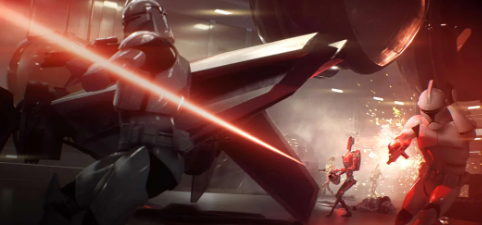Legacy and Limitations: Assessing the Battlefront Classic Collection
In military-themed gaming, the deployment of officers serves as a pivotal strategic element, with each officer archetype fulfilling distinct roles. These include the frontline assault officer, proficient with attack rifles; the precision-based sharpshooter, adept at long-range engagements; the heavy-hitting demolitions expert, wielding rocket launchers; and the support specialist, excelling in short-range combat and vehicle repair. Additionally, unique units such as the Republic Clone Army’s jetpack-equipped Jet Trooper and the CIS’s agile Droideka offer further diversity to gameplay dynamics.
The Battlefront series, developed by Pandemic Studios, immerses players in the Clone Wars and Galactic Civil War settings of the Star Wars universe. While both Battlefront and Battlefront 2 share similar gameplay mechanics, the latter enriches the experience with space battles, playable iconic characters from the films, and a narrative-driven campaign intertwining with Revenge of the Sith. Fond memories of engaging with these titles evoke nostalgia, with personal experiences tied to exploring the intricacies of the Clone Wars, particularly through the immersive storytelling of the 501st Diary in Battlefront 2.
However, despite its historical significance, the outdated mechanics and unsatisfying gameplay elements of the original Battlefront titles diminish their appeal in contemporary gaming. Aspyr Media’s Star Wars: Battlefront Classic Collection attempts to revitalize the experience, incorporating post-launch content, additional playable heroes, and gameplay enhancements such as expanded multiplayer support and increased player counts per match. While commendable, these efforts accentuate the glaring shortcomings of the original titles, highlighting their inability to adapt to modern gaming standards.
Moreover, issues persist within the core gameplay experience, including imbalanced offline campaigns and online multiplayer battles that often lead to predictable outcomes. The lack of incentive to explore different officer classes further exacerbates monotony in engagements, undermining the potential for strategic diversity and dynamic gameplay. Despite attempts to introduce hero characters as a counterbalance, their limited availability fails to rectify the inherent flaws in game balance and progression.
Furthermore, the moment-to-moment gameplay fails to deliver satisfying gunplay mechanics, relying excessively on auto-aim features that diminish the skill-based component of combat. Space battles, while initially appealing, suffer from repetitive gameplay loops and lackluster map variety, contributing to a sense of staleness and frustration among players. The emergence of newer Star Wars titles, such as those developed by EA DICE and titles like Squadron, further accentuates the inadequacies of the Battlefront Classic Collection, rendering it a lackluster offering in comparison.
In conclusion, while the Battlefront Classic Collection aims to preserve the legacy of the original titles, it ultimately falls short of delivering a compelling gaming experience. However, it remains a valuable historical artifact, offering insights into the evolution of gaming over the past two decades and the enduring impact of the Star Wars franchise on gaming culture. As such, while it may not fully meet the expectations of contemporary audiences, it stands as a cherished piece of gaming history for many enthusiasts, serving as a testament to the enduring legacy of the Star Wars franchise in gaming.

